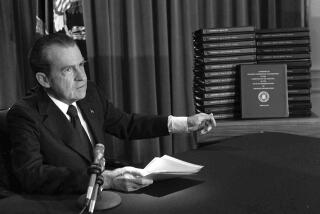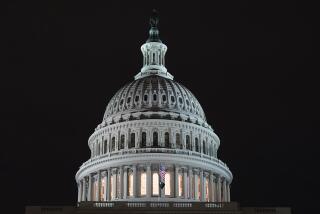Line-Item Veto a Smart Way to Cut Spending?
President Clinton recently exercised the long-coveted line-item veto authority passed last year by Congress that allows a president to strike down a single legislative provision rather than an entire bill.
Using the new power, the president struck three provisions from recently approved spending measures that could save taxpayers $600 million over five years.
While supporters of the new executive tool believe it serves as a weapon against wasteful spending and will be used with discretion, opponents claim the authority shifts the constitutional balance of powers toward the presidency and should be overturned by the Supreme Court.
Is the line-item veto an appropriate tool for limiting congressional spending?
Rep. James Rogan (R-Glendale):
“I’ve always supported giving the president the line-item veto. It creates a Hobson’s choice when the Congress sends to the president a trillion-dollar-plus budget in a “take-it-or-leave-it” fashion. There are many times Congress will pass appropriations with many pork-barrel projects that were traded by influential members. The president should have the ability to excise the unnecessary or wasteful spending.”
Rep. Howard Berman (D-Mission Hills):
“I have always opposed the line-item veto because I think it is an unconstitutional delegation of legislative power to the executive branch. On policy I agreed with everything President Clinton did on these bills. . . . But I think it remains to be seen whether the courts will uphold his line-item veto authority. I’m dubious that they will. I will vote to uphold the vetoes, [but] giving the line-item veto power to the president is a mistake. I think the Republicans will rue the day they decided to abdicate legislative authority.”
Joel Fox, president of the Howard Jarvis Taxpayers Assn.:
“I think the line-item veto is long overdue. There are many items that should not be in the budget, yet they became law because these items are part of the whole package. [They] don’t get into the budget because of merit; the legislators don’t have time to study each item. Sometimes there’s vote-trading--I’ll vote for yours if you vote for mine. . . . The line-item veto allows the president to act like a surgeon and liposuction the fat out of the budget without destroying the whole body. And there is a safety valve: The Congress can override the veto.”
Warren Grimes, professor at Southwestern University School of Law:
“[The line-item veto] is probably useful, but all it does is get the president involved in the bargaining process for a particular spending proposal or tax exemption. It doesn’t guarantee that the spending won’t happen, but now the sponsors have to bargain with the president. . . . The hope is that [he] will be representative of the general interest and will not be pressured by special interests. He’s going to be a bargainer and a trader. But it’s not going to solve spending problems. . . . There’s a serious constitutional question about the line-item veto. The odds are about 60-40 it’ll be overturned.”
More to Read
Get the L.A. Times Politics newsletter
Deeply reported insights into legislation, politics and policy from Sacramento, Washington and beyond. In your inbox three times per week.
You may occasionally receive promotional content from the Los Angeles Times.










